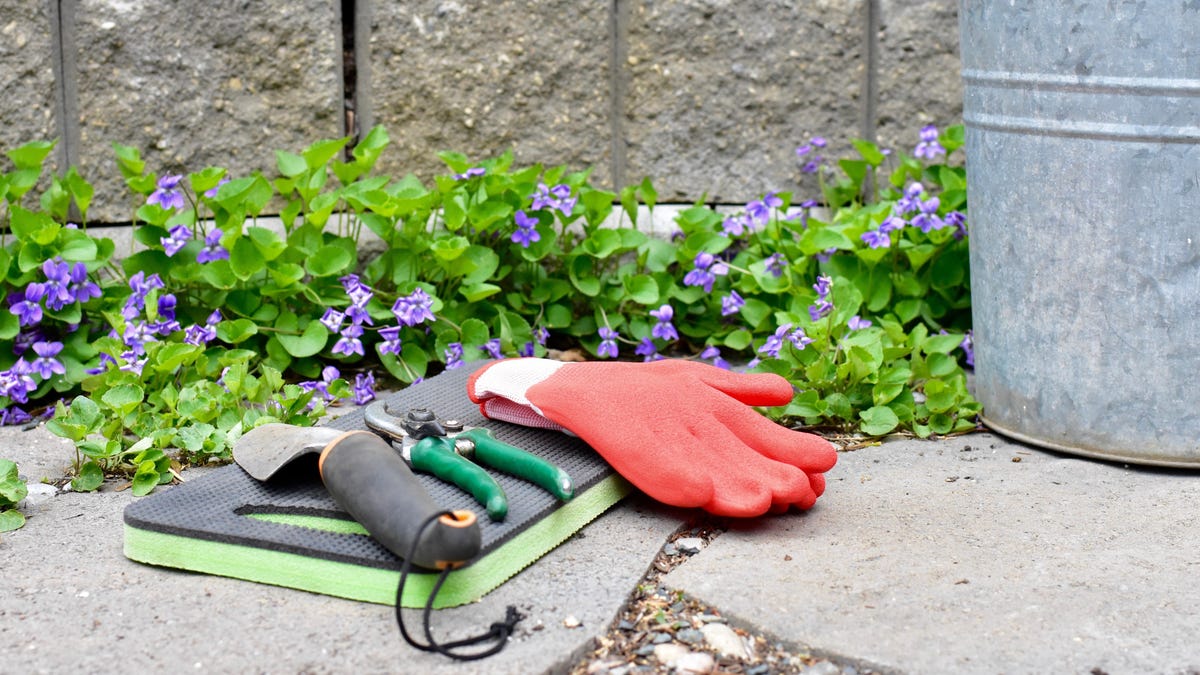Garden Supplies to Keep for Next Year (and What to Get Rid Of)

Every year we buy more and more gardening supplies – and every fall we have to figure out how and where to hide them for the winter. Now is the perfect time to organize, divide, and let go. There’s no need to store things you won’t need anymore, as garages and sheds keep everything in hibernation forever, until your kids have to clean it up long after you’re gone.
What to hold on to
The trellises should be removed for the winter, but even if you don’t think they will return to the same place next year, keep them. The same goes for plant stakes and any wood leftover from projects longer than a foot.
Pots that are in good enough shape to hold water should continue to be used, so hang on to them. All fertilizers, baits, pest treatments and surfactants will have a shelf life long enough to last until next year and are difficult to dispose of safely. For the winter, they should be put in a safe place, away from pets and children.
Tomato clips (those plastic clips you use for trellised tomatoes) can be reused year after year, so save them and wash them thoroughly in water with a drop of bleach.
Any tools you have used in the last two years should be cleaned and put away. But first, take a look at each of these tools this year and ask yourself when was the last time you used it. If we had a different president, he should have been relegated to the freebies pile.
The soil should be reused, and all those half-empty bags of soil and fertilizer should also be saved; they don’t spoil, although they may have worms in them next year, which is actually a sign of healthy soil.
Patio furniture in good condition should be covered or removed, and minor repairs should be done annually in the spring anyway. But those items you’ve been holding onto for years and you know you’re not going to take the time to keep, or maybe they’re not worth it—it’s time to give away a bunch of gifts.
What to gift
If you’re ready to ditch your gardening supplies, there are a few ways to do it. I’ve found that the best strategy—if you want to be the least bothered about this process—is to leave items at the curb and list them in neighborhood groups.
Tomato cages tend to look worn and bent this time of year, and small, cheap cages deteriorate quickly. If you can afford to upgrade to nicer, larger cages next year, it’s time to give away the old ones. No matter what form they are in, someone needs them.
Garden ephemera such as statues, hose reels, fountains and garden gnomes are easy to find homes. Planters you no longer need are someone else’s mosaic tiles.
There is a middle ground for garden furniture: if the item is in usable shape, it’s worth trying to donate it, but truly broken parts should be thrown in the trash. (The same goes for hoses.) You can also give away part of a set, such as an umbrella base without fabric or seat cushions without covers. Someone is more likely to want a pillow insert without a cover than a pillow with a stained or torn cover.
Any lawn or yard maintenance tools – lawn mowers, trimmers and hand tools, rakes, shovels, etc. – can be easily donated. Even when a lawn mower needs some work, someone will want to try it.
Plastic pots from the nursery can be given away in bulk or taken back to the garden center.
What to quit
Garlands that no longer work and require one or two bulbs to be replaced are thrown away. Furniture that is truly broken, or cushions and umbrellas that are stained, torn, or unsalvageable.
Cracked plastic pots or flower pots will disappear. Nobody needs them. Check at the bottom for a recycling stamp, but they are usually not recyclable.
Nobody wants your old gardening gloves. If they’re washable, great, but otherwise they’re disgusting. Drop them.
When it comes to broken garden decor – if you can’t or won’t take the time to fix it, no one else will either. Additionally, these items are usually cheap to begin with.
To dispose of these items, look for mass trash pickup locations in your area. In addition to these events, local groups can also host public events through their local waste service. When you dispose of products, it is important to make sure you do so safely. Namely, make sure all chemicals are disposed of according to city regulations—not only to stay on the right side, but because regulations are in place to protect our waterways. The city will have instructions on where to take items that cannot be thrown into regular trash.